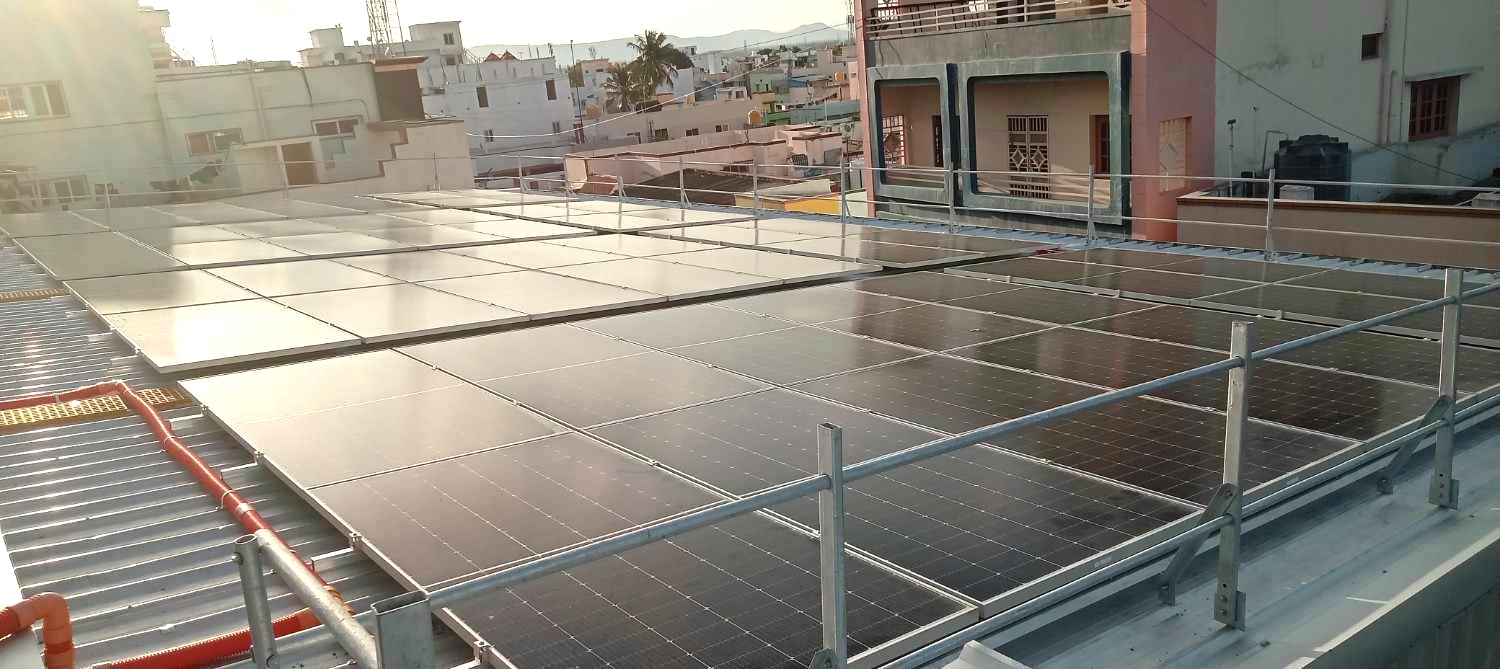
Assessing Your Solar System Requirements
In today’s world, transitioning to renewable energy is essential for combating climate change and fostering sustainability.
Solar energy is one of the most accessible and efficient solutions for homeowners looking to reduce their carbon footprint and cut energy costs.
By harnessing the sun’s power, you can lower your electricity bills, increase your property’s value, and achieve energy independence. According to the International Energy Agency, solar is projected to become the world’s largest source of electricity by 2050, underscoring its critical role in the future of energy.
Switching to Solar Energy
Switching to solar energy is a smart investment for both your finances and the environment. Whether you're a small business owner or homeowner, estimating your solar capacity needs is key to maximizing efficiency and cost savings. In this guide, we'll walk you through the process using a practical example of Mr. Shivam, a small factory owner from Pune, to help you determine the right solar capacity for your property.
Understanding Solar Capacity Requirements
Before diving into calculations, let's clarify solar capacity. Measured in kilowatt-peak (kWp), it represents the maximum output of a solar power system under ideal conditions. Accurately estimating this ensures your system meets your energy needs without overspending.
Step-by-Step Guide to Estimating Solar Capacity
Step 1: Calculate Your Average Electricity Bill
Your electricity bill is crucial in determining the solar capacity you need. Here’s how to approach it:
- Collect Your Bills: Gather your electricity bills for the past 12 months. This data accounts for seasonal variations in energy use, providing a precise estimate.
- Analyze Consumption: Review the units or kilowatt-hours (kWh) consumed each month. For example, here’s a breakdown of Shivam’s monthly consumption:

Use the following formula to determine the required solar capacity:

For Mr. Shivam:

Note: In India, 1 kWp of solar power typically generates 4 kWh per day. This varies based on location, sunlight hours, and weather conditions.
Step 2: Measure Available Roof Area
Next, check if your roof has enough space for the solar panels. Use a tape measure or building plans to determine the roof area. Note any shadows from obstructions.
Calculate Space Needed: Typically, 1 kW of solar needs 10 square meters (or 100 square feet). Modern, efficient panels may need less space.
For Mr. Shivam: A 2kW system is needed.

Since Mr. Shivam has 500 sq. ft. available, he has plenty of space for his solar panels.
Step 3: Check Your Sanctioned Load
The sanctioned load is your electricity provider's approved maximum load:
- Find the Sanctioned Load: Look for this information on your electricity bill. It's also called the connected load.
- Match Your Solar Capacity: Keep your solar capacity within this sanctioned load.
Mr. Shivam's sanctioned load is 2 kW, matching his 2 kWp solar system.
If your roof supports more capacity than your sanctioned load allows, you may need to request an upgrade from your provider.
Comparing the Results
After completing these steps, compare the results to find your ideal solar capacity:
For Mr. Shivam:
- Average Electricity Bill: 2.083 kWp
- Available Roof Area: Can accommodate more than 2 kWp
- Sanctioned Load: 2 kW
Based on the lowest value (sanctioned load), Mr. Shivam's final solar capacity should be 2 kWp.
Additional Considerations
Solar capacity is just one aspect of designing an efficient system. Keep these factors in mind for optimal performance:
- Solar Panel Efficiency: Panel efficiency dictates how well sunlight is converted into electricity. Higher efficiency panels generate more power in less space. Choose between monocrystalline, polycrystalline, or thin-film based on your needs.
- Geographic Location: Your location influences solar potential. Equatorial regions receive more sunlight, making solar energy more effective. Use solar maps or consult local experts to assess your area’s solar viability and seasonal variations.
- Orientation and Tilt of Solar Panels: Panel placement affects performance. In India, south-facing panels with optimal tilt angles capture maximum sunlight. Adjustable mounts can optimize panel position year-round.
- Future Energy Needs: Plan for future energy use, considering potential electric vehicles, new appliances, or property expansions. This foresight can help avoid costly upgrades later.
- Battery Storage Systems: Batteries store excess energy for use during the night or on cloudy days, providing a steady power supply and reducing grid dependence.
- Net Metering Policies: Understand local net metering policies for selling excess energy back to the grid. These credits can lower electricity bills and improve system efficiency.
- Environmental and Aesthetic Considerations: Modern solar panels come in designs that complement your property. Following eco-friendly standards can also enhance property value while supporting sustainability.
- Maintenance and Durability: Solar panels require minimal maintenance. Regular cleaning and monitoring ensure peak performance. Quality panels typically come with 25-year warranties for long-term reliability.
- Financial Incentives and Rebates: Explore government incentives, tax credits, and rebates available for solar installations. These can significantly reduce upfront costs. Research local subsidies and grants to maximize savings.
- Professional Installation and Support: Choose a trusted installer to ensure proper system design and installation. Their expertise will guarantee optimal performance and help navigate regulatory requirements.
Ready to Embrace Solar Energy?
These steps will help you determine the right size for your solar system and make smart decisions about your investment. A well-planned solar installation will both save you money and support environmental sustainability.
Choosing the right system size is key to maximizing benefits. By following these steps and considering these factors, you'll make an informed decision. Contact us today to explore your solar potential and start your journey toward sustainable energy! Begin with a detailed energy assessment and connect with a solar professional who can guide you through the installation process.
For solar installations or solar-related inquiries, contact us at REV Solar.